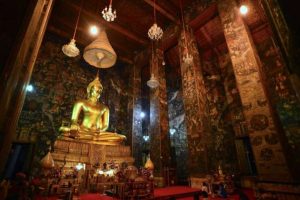
Located about two hours outside of Yangon, the Thanlyin Thabarwa Centre has neither the tranquillity of a meditation retreat nor the ornamentation of many Burmese temples. In fact, it feels more like a busy shantytown. With more than 3,000 permanent residents of all ages from assorted backgrounds—monks, novices, nuns, yogis, the niece of an army major-general, a film star, addicts, prostitutes, the homeless, the abandoned, the chronically ill, the disabled, the elderly, families with children, and volunteers, the centre is usually abuzz with activity, especially over the weekends when hundreds of visitors arrive.
Aside from the monastic members and foreign volunteers, most of the residents live in overcrowded communal dormitories constructed largely of bamboo. Due to the lack of space, people simply make do with whatever living areas are available, with some sleeping under flimsy, stained tarpaulins that look like they could hardly withstand a heavy rainfall.
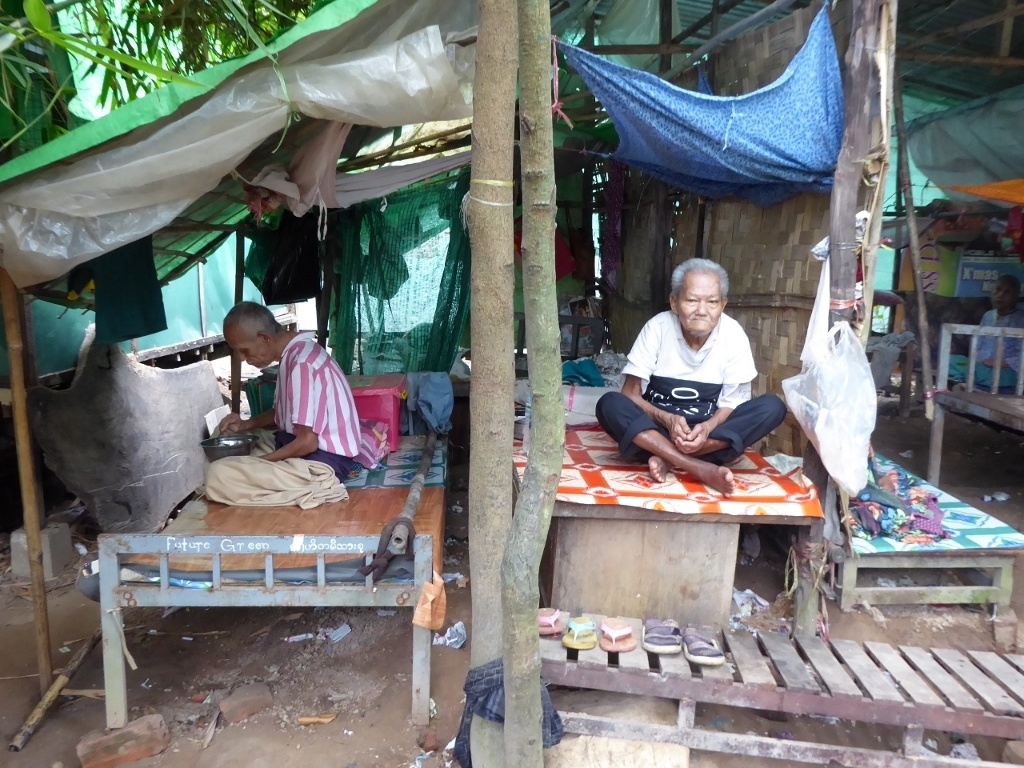
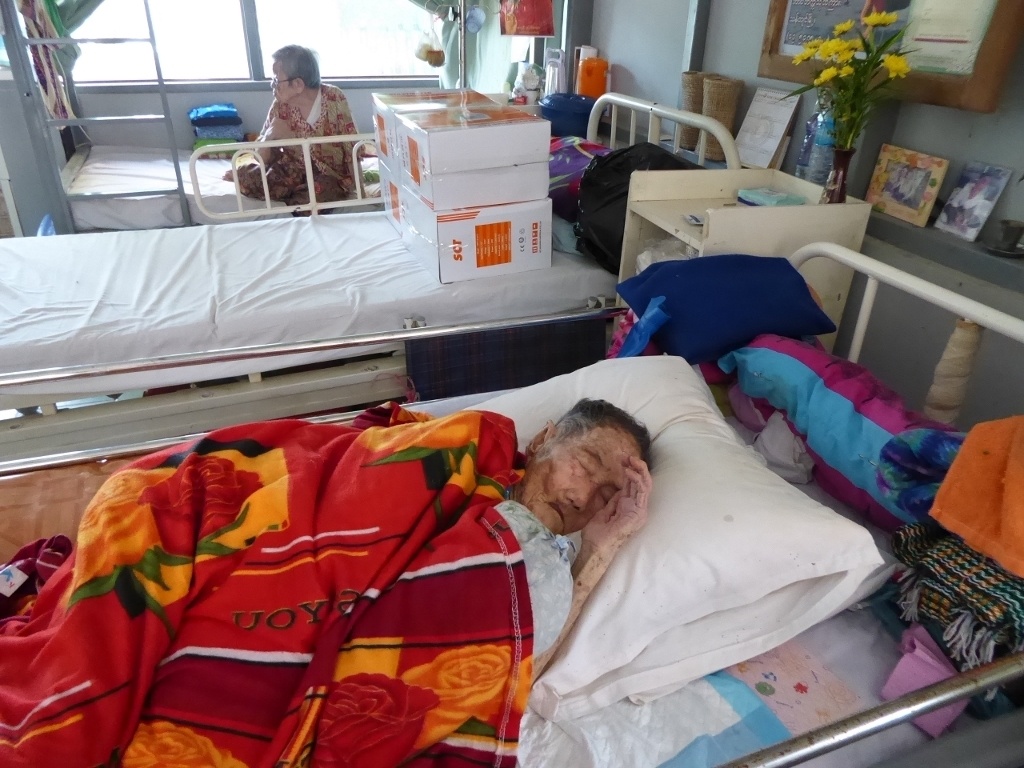
Within the centre is a hospital housing a few hundred patients with diseases ranging from HIV, tuberculosis, cancer, and diabetes to mental illnesses. Managed by a team of volunteer doctors and assistants, medical treatment is completely free. There is even a sparsely equipped “intensive care unit” for about 10 people, including 110-year-old Daw Shwe, who came to Thabarwa with her son some six years ago. Since he passed away from age-related ailments last year, she has been bedridden, lying frail and hopeless in the hospital.
The busiest places at Thabarwa are probably the two kitchens, where more than 300 kilograms of rice must be cooked daily to feed the thousands of residents and visitors. Fortunately, there is no lack of volunteers for the endless work of washing, cutting, cooking, and distribution. At meal times, there are usually long queues—people waiting to collect their meals, and helpers filling buckets for distribution to those who are bedridden or unable to collect the food themselves.
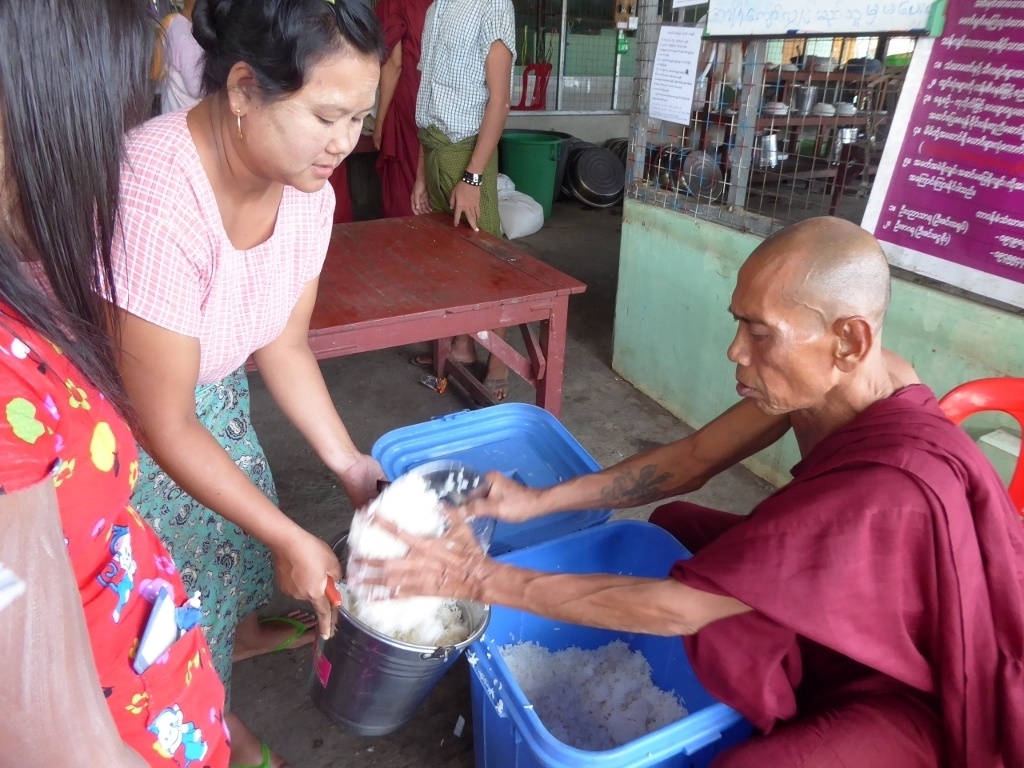
About 15 minutes’ walk from the main centre is Saytanar (or Goodwill) Village, also known as “15 feet village,” because the big plot of land is divided into small parcels of 15 by 15 feet (4.6 by 4.6 meters). To qualify for one of these parcels at Saytanar Village, there is no requirement to prove one’s financial status or need. Applicants only have to fulfil one condition—to meditate for seven days at the monastery.
Most of the 3,000 families in the village (of about 15,000 people) live well below the poverty line and cannot afford to pay rent. For many, a 15-by-15-foot bamboo hut is a welcome alternative to homlessness. With climbing land costs in Myanmar due to rapid development in recent years, many people have been forced out of their homes. In the countryside, large areas of farmland have been acquired on behalf of foreign companies. With no means of survival, many displaced people migrate to Yangon in search of work but end up sleeping on the streets or under bridges. Development-induced displacement, exacerbated by natural disasters, has already rendered millions homeless.
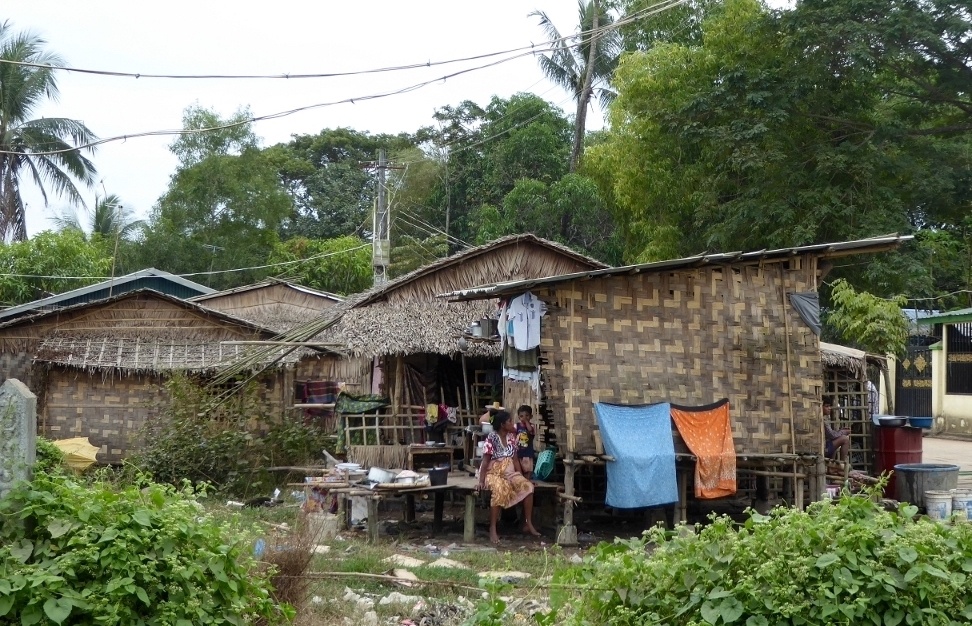
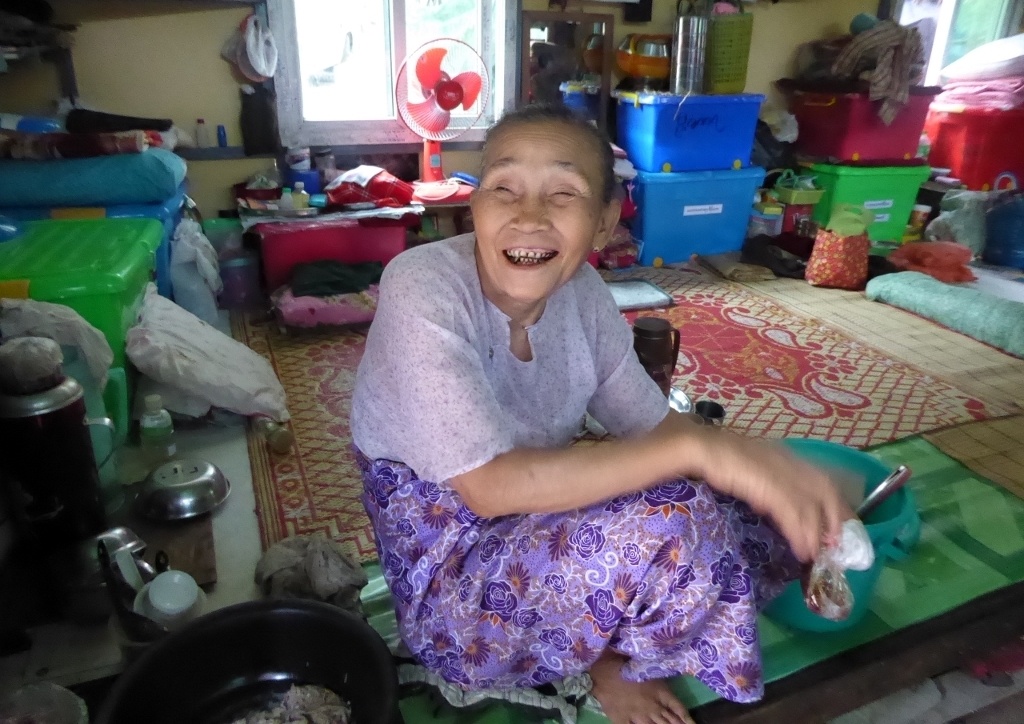
For Tin Win, 57, and her family of six, Thabarwa was their last resort because they could not afford to pay the advance of six months’ rent required to renew the lease on their property.
Myint New and her family of nine have been here for two years, and she is grateful for what they receive. “My husband had a stroke and is unable to work,” she says. “With no income, we had nothing to eat. I have no relatives to help me.” With the little she makes from selling fruit, she is able to buy snacks for her children occasionally and medicine for her husband, but Myint New can see no way out of her difficulties. “I want to live in my own house and run my own business,” she said. “But I have no savings.” Unable to afford building materials, the family have been staying in a communal dormitory.
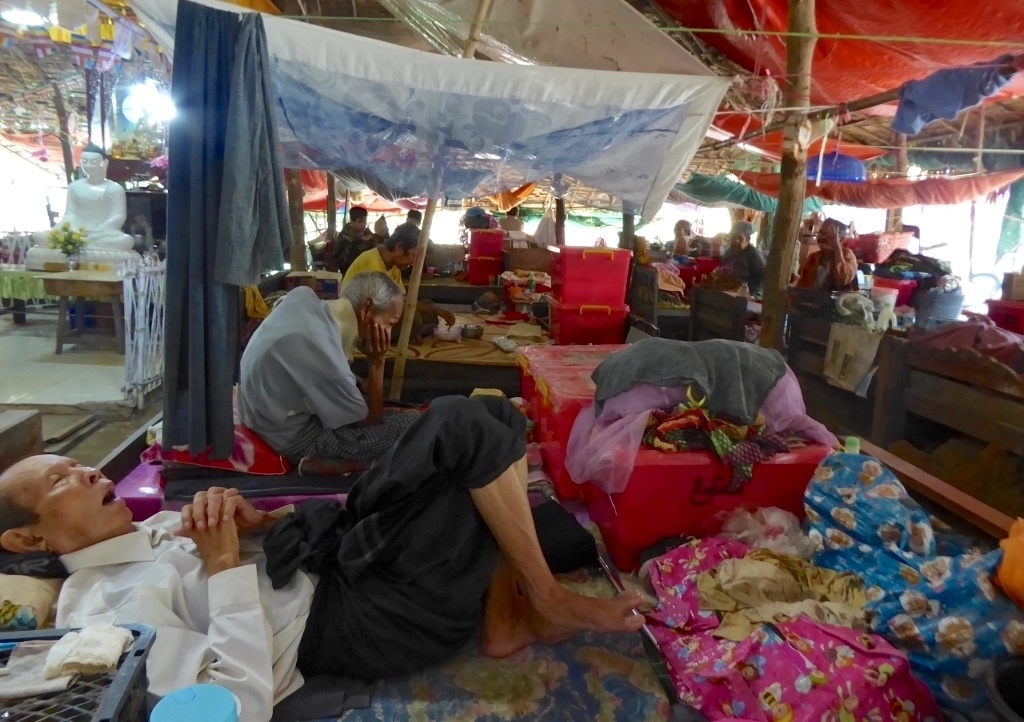
Thabarwa Centre was founded by Sayadaw U Ottamasara, a pale, lean-looking monk who is much revered by everyone here. Unlike many senior monks in Myanmar who enter the monastery at an early age, Sayadaw Ottamasara was not ordained until the age of 33, after giving up his business and selling all his assets. Despite this, the 48-year-old Sayadaw has managed to garner a following in Myanmar and overseas, where he travels regularly to conduct meditation retreats.
He established Thabarwa Centre in 2008 to teach meditation, but soon realised that there was a need to provide a permanent home for some elderly yogis who had been abandoned at the centre by their families. As more and more people came, he decided to develop Thabarwa into a home for the needy. With the generous support he received he acquired more land, and within a few short years Sayadaw Ottamasara has expanded his services to include two centres in Pyin Oo Lwin and Thayetpinyeik in Ayeyarwady Region, and nearly a dozen meditation centres around the country. Another 73-hectare Saytanar Village for 500 families has also been set up in Hlegu, outside of Yangon, together with an animal sanctuary.
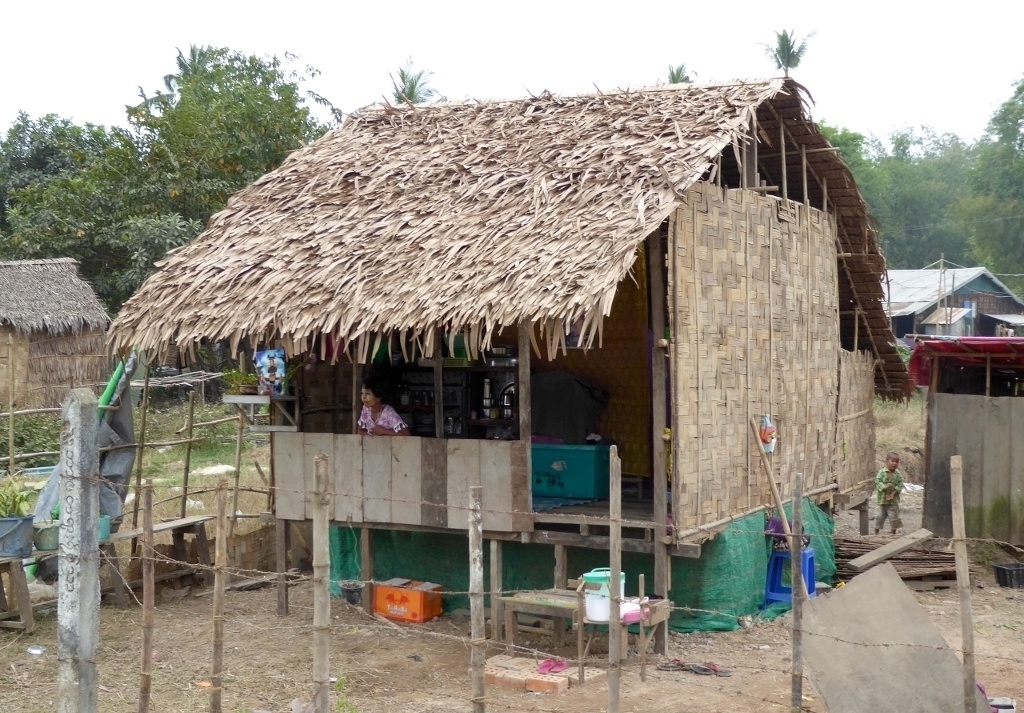
Sayadaw Ottamasara’s vision for Thabarwa goes beyond just providing a refuge for the needy. He sees it as a place where everyone can perform good deeds. “I believe that if we want good results, we must do good deeds. This centre was established to teach people about the benefits of doing good deeds,” he said. “In this country, there are many poor people who have no work and cannot find any way to survive. They come to Thabarwa for help. Instead of confronting and solving problems directly by traditional social norms, I encourage, train, and guide the people to solve their problems with the aid of the Dhamma, through meditation practice and right understanding. Everyone here can donate their skills, time, energy, money, and materials to gain merit and practice meditation for a worthy cause. By so doing, they will be able to fulfil their desire. If they want land, they will get land. If they want a home, they will have a home. Gradually, they will realise that their problems were solved due to the merit they gained from their good deeds here.”
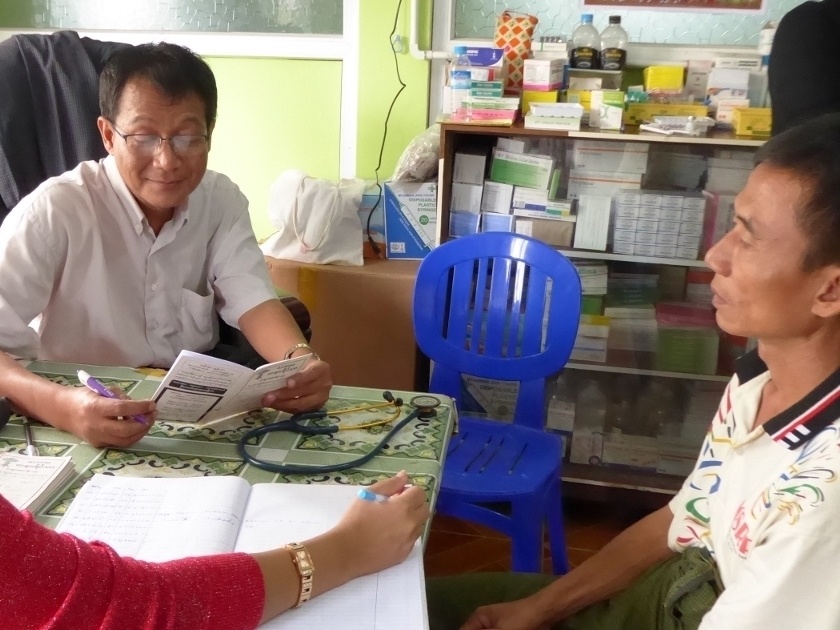
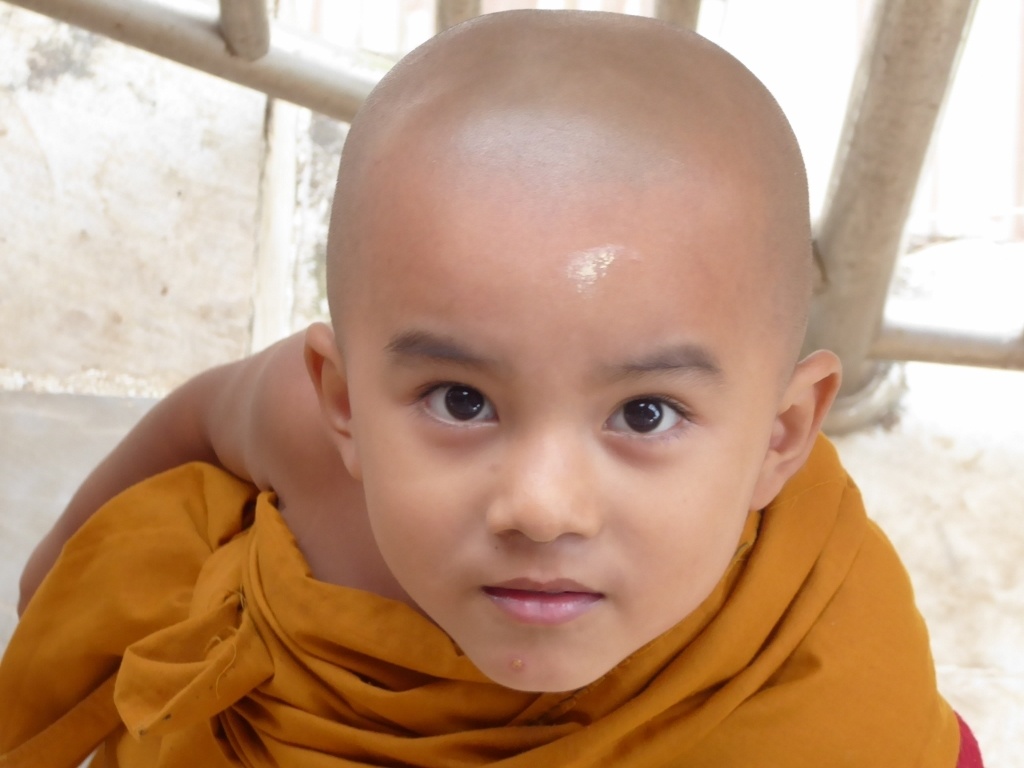
For some, such a vision may seem overly optimistic. Admittedly, in trying to accommodate anyone, regardless of race, status, background, and beliefs, there will be problems. There will be some who come for selfish gain, such as profiting by selling their parcel of land at Saytanar Village, even though it is illegal to do so. There will be some who prey on the kindness and generosity of donors, such as the drunkard who reeked of alcohol and cigarettes, pestering visitors for money. There is also the danger of creating an addiction to assistance that renders people lazy and helpless, rather than taking responsibility for their own lives or striving to improve their conditions. Some of the young people I spoke with at the centre do not attend school, but hang around and occasionally do simple chores.
In addition, there is a genuine concern about health and hygiene because of the poor living conditions. The communal dormitories are overcrowded, with poor ventilation and exposure to sunlight. A rancid odour pervades and the air is stale and stuffy. The “wards” in the hospitals are dilapidated, with broken doors and windows. And hills of garbage and pools of stagnant water provide a festering ground for all kinds of diseases, much like the slums in other parts of the country. Yet amid the squalor, life goes on.
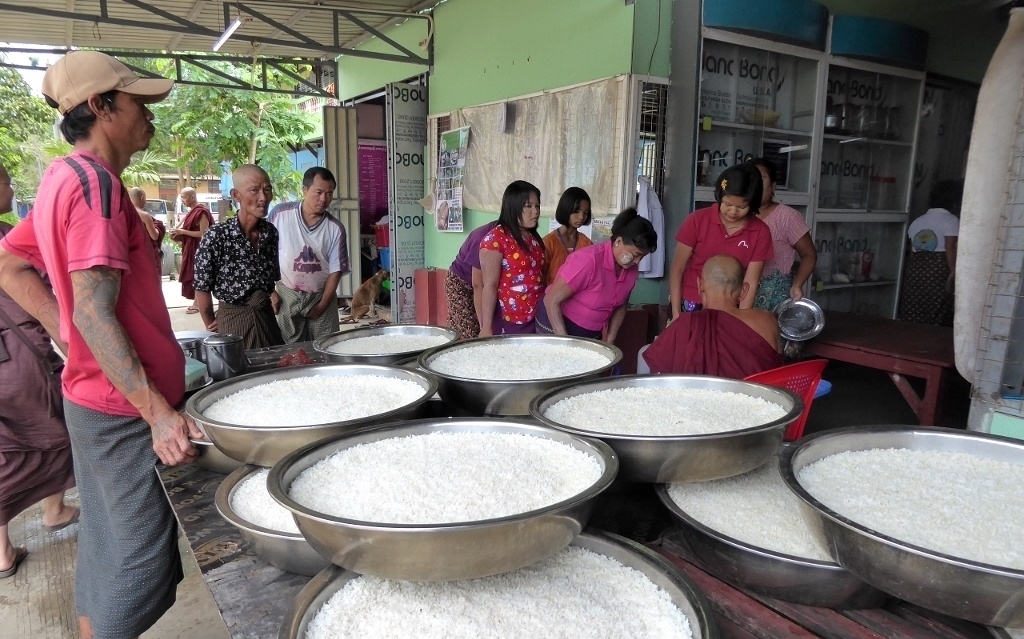
Sayadaw Ottamasara remains unwavering in his conviction: “Most of the people here are not healthy, not young, not rich, but their minds are healthy and clean, with fewer attachments than most people in society. This is the place of healthy and wealthy minds.”
My visit to Thabarwa conjured up a storm of emotion and mixed reactions within me. The raw, stark reality of Thabarwa challenges us to reflect upon our attitudes and prejudices. How do we balance compassion and wisdom in performing charity? Are we discomfited by that which is repulsive and squalid because it threatens our own self-cherishing thoughts and sense of self-righteousnesss? But was it not the sight of humanity in all its wretchedness that drove Prince Siddharta to leave behind the comfort and security of his royal existance to search for an answer to life’s suffering? It takes much courage to be fully immersed in the sea of human suffering, to transcend and embrace all—the good, the bad and the ugly! As Joseph Campbell says in The Power of Myth: “When we quit thinking primarily about ourselves and our own self-preservation, we undergo a truly heroic transformation of consciousness.”
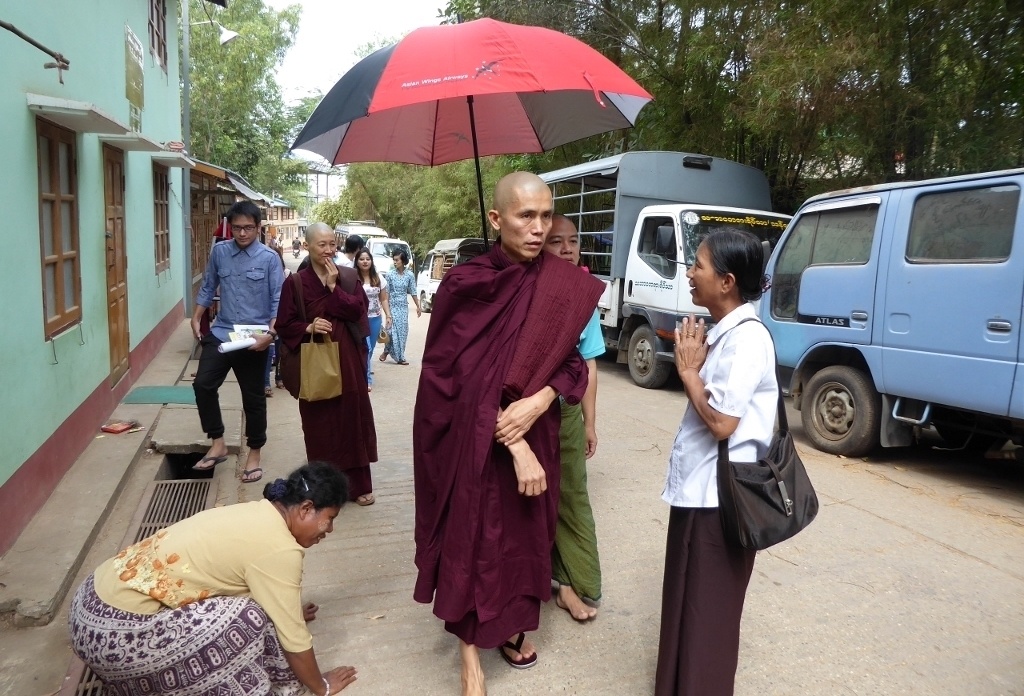
Images courtesy of the author.
References
Campbell, Joseph with Bill D Moyers. 1988. The Power of Myth. New York: Doubleday.
See more










